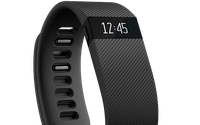 There’s an ever widening gap in those
who buy into the Internet of Things and those who don’t.
There’s an ever widening gap in those
who buy into the Internet of Things and those who don’t.
This is not to say that marketing and business execs don’t see the import of the transformational change coming, but rather
the pace of consumer adoption may not be keeping up.
The latest IDC report on the numbers around the state of the wearables market is but one example.
While some 100 million wearable
devices will hit the market globally this year, the projection is down from only a few months ago.
This begs the question of whether consumers are testing the IoT waters and then stepping
back.
In some ways it’s like mobile apps, except with hardware.
A consumer may download an app that seems to make sense at the moment, but within a short period of time lose
interest and discard it. Deleting is so easy with software.
In the land of Iot, a consumer may buy (or receive as a gift) a FitbBit, Jawbone or someother fitness tracker for their
wrist.
Like a new app, the consumer may try it on and out and then lose interest. In this case, the wearable is simply tossed into a drawer where it continues to reside by itself.
In
addition, features of fitness trackers are migrating to other devices, such as smartphones.
For example, anyone who wants to track walking distance or time can tap into Android’s Google
Fit, which tracks steps taken, miles, time, average pace and calories burned. Playing to its strength, Android also provides the location where all of the walking occurred.
Several studies
have noted that the abandonment rate of fitness trackers is relatively high.
But that’s a tough measurement to track, since the features are an evolving work in progress.
Ultimately, the right products will end up with the right consumers. Until then, the gap will remain.
-----------------------------------------------------------------------------------------------
The MediaPost IoT Marketing Forum is
being held Aug. 3 in New York. Check it out the agenda here